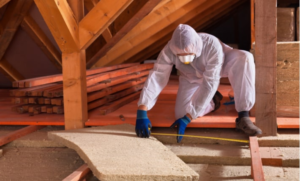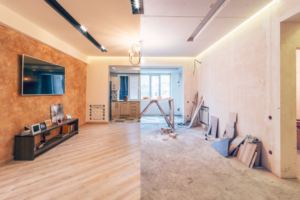Link Juice is the amount of value a page passes through its links. It is a key factor in determining search engine rankings. Its distribution depends on a variety of factors.
The first is relevance. If a page links to a contextually irrelevant page, the value of the link will be diluted. Also, the position of the link in a page matters.

The more quality backlinks a webpage receives, the higher its PageRank and the better it will rank in search engine results. However, not all links are equal and some can even hurt a website’s ranking, as Google may identify them as toxic backlinks. Luckily, there are ways to avoid toxic backlinks and improve your website’s SEO. One way is to focus on building high-quality content. Another is to use a tool like SEMrush to monitor your link profile. You can also disavow toxic backlinks when needed.
There are several factors that affect the potency of a backlink, including the source site’s authority, the type of anchor text, and the target page’s content. The age of the link and the user engagement metrics can also play a role. For example, if a site is penalized by search engines for using manipulative tactics, the link’s value may decrease.
A webpage’s link juice is determined by the number and quality of its inbound links, as well as how the page is optimized for SEO. A well-planned internal linking strategy can distribute link juice throughout a website and increase its overall domain authority. In addition, creating high-quality, relevant content is a crucial component of link juice optimization.
There are many different ways to create and acquire inbound links, but it is important to remember that quantity isn’t everything. The best strategy is to focus on building links from reputable, authoritative websites. In addition, it’s important to use tools like SEMrush to monitor your link profile and remove any spam or low-quality links.
The quality of inbound links plays a significant role in determining a website’s PageRank and its ability to rank well in SERPs. The best way to get high-quality inbound links is by creating content that’s worth linking to, such as blog posts, videos, and infographics. You can also try expanding and repurposing existing content, such as “top 10” or “top 20” lists. This technique is called the skyscraper technique and can be very effective. However, it’s essential to make sure that you don’t overdo it or risk getting penalized by search engines.
Anchor text
When a page links to other pages, it passes a portion of its link juice to the linked page. The amount of link juice passed is based on several factors, including the quality of the page and the relevance of its content to the target page. Link juice also depends on whether the link is dofollow or nofollow and the anchor text used. Using relevant anchor text can help improve a website’s SEO ranking.
The location of the anchor text can also affect the amount of link juice a page passes. If a link is placed in the body of a piece of content, it will pass more juice than a link in the sidebar or footer. The use of keywords in the anchor text is important, but overly optimized keyword strings can be seen as spam by search engines. Instead, use synonyms and latent semantic keywords (LSI keywords) to optimize your anchor texts.
Another factor that affects link juice is the number of internal links on a page. Too many internal links can dilute the value of a page, and they may even cause a site to become penalized. Ideally, you should limit the number of links to five or less. It is also a good idea to remove or disavow links that are not relevant to your website’s topic. This can prevent you from getting penalized by Google and improve your overall web positioning.
A strong internal linking structure can distribute link juice efficiently and improve a website’s SEO performance. It helps to organize and prioritize content within a website and allow crawlers to easily discover new pages. It can also distribute link juice to the best-positioned pages on a site.
The use of 301 redirects is also an important part of a link-building strategy. Having a 404 error page on your site can reduce the number of inbound links and can damage your site’s SEO performance. Fortunately, there are several tools that can help you find and fix broken links on your site.
It is also important to use a proper title tag and meta description for each of your pages. These tags will tell search engines what your pages are about and help them determine if they are relevant to the user’s query. They will then rank your pages accordingly.
PageRank
PageRank is a Google algorithm that determines the importance of a website and its ranking on SERPs. It consists of several factors, including inbound links and page content. The more a webpage is linked to by other websites, the higher its PageRank. In addition, the more relevant a website is to search queries, the higher its PageRank. While PageRank is not the sole factor in SEO, it plays a significant role.
The amount of PageRank a webpage passes can vary, depending on the number of outbound links it contains and the quality of those pages. For example, a page that has many outbound links will pass less link juice to each of them than a page with few outbound links. Additionally, the PageRank of a website is not static; it can increase over time. Therefore, it is important to keep track of your PageRank and other SEO metrics.
A webpage’s PageRank can also be affected by its location within a website. For instance, a link situated in the main content of a webpage is more valuable than a link located in the footer or sidebar. In addition, the keyword used as the hyperlink’s anchor text can influence its PageRank. It is important to use descriptive, keyword-rich anchor texts. However, over-optimization and spammy anchor texts can be detrimental.
In the past, users may have qualified links with the rel=nofollow attribute to prevent the transfer of PageRank through them. This was a manipulative tactic called “page rank sculpting.” While this technique is no longer effective, it can still be used to focus the flow of link juice to specific pages.
The most important factor in link juice is the number and quality of inbound links. High-quality links from reputable sources are more likely to pass link equity than low-quality links. In addition, inbound links from other websites that are related to your niche are more valuable than inbound links from irrelevant sites.
The number of inbound links a website has is also important, as well as its overall website authority. A website with a high domain authority is viewed as more authoritative by search engines, and it is more likely to have a high PageRank.
Redirects
Redirects are a key tool in SEO, helping to preserve PageRank and enhance website navigation. But they can be confusing for webmasters, especially when used improperly. Understanding how to use 301 redirects properly can improve your website’s SEO and user experience. For example, when a page on your site has a high PageRank, it can be a good idea to 301 redirect it to another more relevant page. This way, the old page can pass link juice to the new one and help it rank well in search engine results.
Historically, 301 redirects were widely believed to lose link juice, but Google has clarified that they do in fact pass PageRank. This has made 301 redirects an important tool for SEO professionals, helping them to migrate content and restructure websites without losing valuable link equity.
When using a 301 redirect, it is important to make sure that the destination URL is a relevant and informative page. Otherwise, search engines may penalize your website for sending too much “junk” to their indexes. To avoid this, you should create a map of internal links that clearly indicates the relationships between different pages. This will help users find the information they need and give search engines a better understanding of your site’s structure.
It is also important to use a 301 redirect for every change in your URL structure. This will prevent a large number of broken links and preserve your site’s link authority. Additionally, you should redirect each old URL to a page that is as similar as possible to the original. This will ensure that your SEO efforts are not wasted.
When implementing a 301 redirect, it is important not to create a redirect chain. This can significantly impact a website’s crawlability and search engine rankings. Redirect chains can cause bots to get stuck in a loop, which can slow down the page load time and frustrate visitors. It is also a bad practice to redirect 404 and 500 errors to other web pages. Instead, you should try to fix these errors as soon as they occur.






